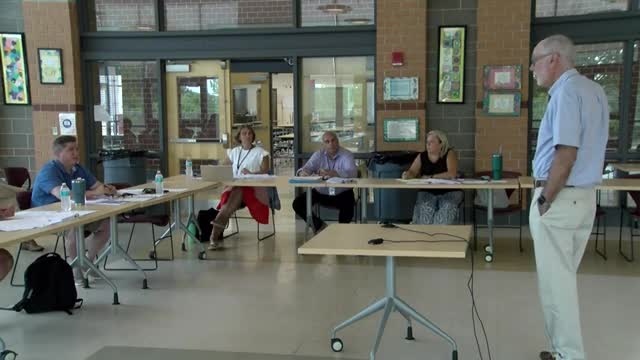Mold Crisis in Schools Linked to HVAC Failures
August 03, 2024 | Fall River Public Schools, School Boards, Massachusetts

This article was created by AI summarizing key points discussed. AI makes mistakes, so for full details and context, please refer to the video of the full meeting. Please report any errors so we can fix them. Report an error »

During a recent government meeting, discussions centered on the critical issue of mold in schools, particularly in relation to HVAC systems and humidity levels. Experts highlighted that malfunctioning HVAC systems can significantly exacerbate mold problems, emphasizing the need for immediate attention to these systems to prevent further deterioration of indoor air quality.
One speaker noted that chronic high humidity can lead to various issues, including the saturation of insulation materials and the development of unpleasant odors, which can be indicative of mold or fungi. The presence of paper products in classrooms, especially in humid environments, was also flagged as a contributing factor to mold growth, as paper can absorb moisture and become a breeding ground for mold.
The meeting also addressed the functionality of unit ventilators, which are essential components of school HVAC systems. These systems, designed to circulate hot or chilled water to regulate classroom temperatures, can become compromised if not properly maintained. Concerns were raised about debris, including paper, accumulating within these units, which can obstruct airflow and lead to further complications.
Participants underscored the importance of preventive maintenance, suggesting that teachers play a vital role in keeping these systems clean and functional. The discussions highlighted the need for a coordinated effort to address both the immediate and long-term challenges posed by mold and HVAC system inefficiencies in schools, ensuring a healthier learning environment for students.
One speaker noted that chronic high humidity can lead to various issues, including the saturation of insulation materials and the development of unpleasant odors, which can be indicative of mold or fungi. The presence of paper products in classrooms, especially in humid environments, was also flagged as a contributing factor to mold growth, as paper can absorb moisture and become a breeding ground for mold.
The meeting also addressed the functionality of unit ventilators, which are essential components of school HVAC systems. These systems, designed to circulate hot or chilled water to regulate classroom temperatures, can become compromised if not properly maintained. Concerns were raised about debris, including paper, accumulating within these units, which can obstruct airflow and lead to further complications.
Participants underscored the importance of preventive maintenance, suggesting that teachers play a vital role in keeping these systems clean and functional. The discussions highlighted the need for a coordinated effort to address both the immediate and long-term challenges posed by mold and HVAC system inefficiencies in schools, ensuring a healthier learning environment for students.
View full meeting
This article is based on a recent meeting—watch the full video and explore the complete transcript for deeper insights into the discussion.
View full meeting
